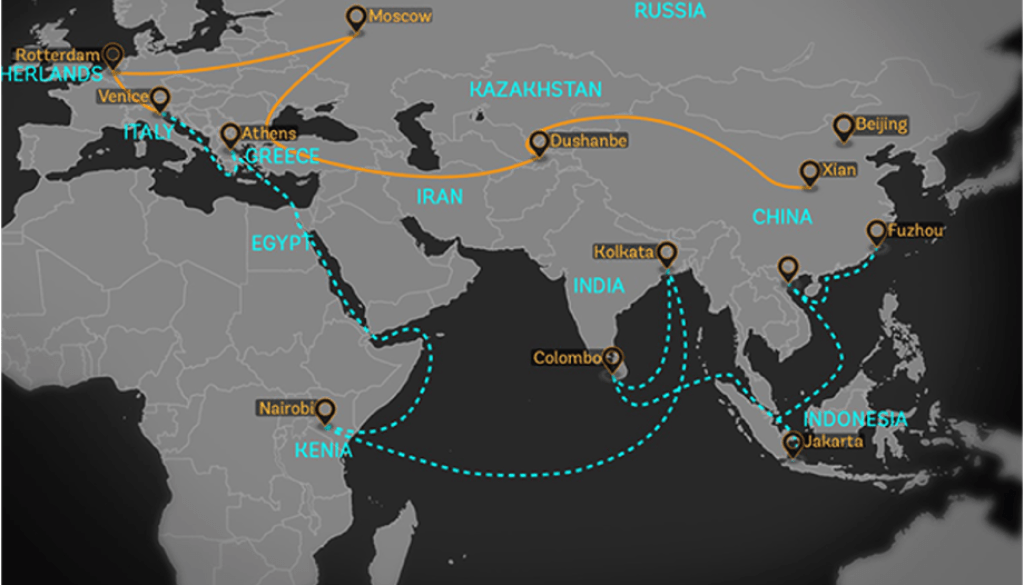The Belt and Road Initiative: accelerating international trade ties
The Belt and Road Initiative (BRI), is a global infrastructure strategy implemented by the Chinese government in hope to form a unified market. Potentially generating a brand new era of globalisation, the initiative was first introduced in 2013 by Chinese President, Xi Jinping, to improve “connectivity and cooperation on an intercontinental scale”.
The Belt and Road Initiative (BRI), is a global infrastructure strategy implemented by the Chinese government in hope to form a unified market. Potentially generating a brand new era of globalisation, the initiative was first introduced in 2013 by Chinese President, Xi Jinping, to improve “connectivity and cooperation on an intercontinental scale”.
Since 2013, the initiative has developed significantly and is now arguably one of the largest collections of construction projects in history, with over 130 participating countries. Therefore, it probably comes as no surprise to know that $500 billion worth of global infrastructure projects are now planned or underway. China’s total oversea’s investment could reach $1.3 trillion over the next seven years. These projects include airports, railways, industrial centres, motorways, ports, urban sectors and new cities.
Within the initiative there are six main economic segments which are referred to as “corridors”. These corridors are allocated dependent on country’s participation and geographical location. Here are the six economic corridors:
- The New Eurasian Land Bridge
- The China-Central Asia-West Asia Corridor
- The China-Pakistan Corridor
- The Bangladesh-China- Myanmar Corridor
- The China-Mongolia-Russia Corridor
- The China-Indochina Peninsula Corridor
How did it get its name?
Originally referred to as “One Belt, One Road” in 2013 by Mr Xi, the strategic name originates from the ancient trading route, Silk Road. Mirroring the idea of this historic route, the initiative aims to create “Modern Silk Routes” by connecting countries in the Far East with the Middle East and Europe. Whilst “Belt” refers to the overland transportation links between the participating countries, “Road” ironically represents the maritime routes connected via Chinese ports.
About Silk Road
Silk Road was established around 2000 years ago during the Han Dynasty in China. The famous route was used for trading products such as tea, cotton, fruits and vegetables, livestock, tools, artwork, materials and of course, silk.
Some of the most popular traded items between the East and West were paper and gunpowder (both invented in China in the Han Dynasty) which consequently had lasting impacts on history and culture in the West. However, it wasn’t just materials discovered on the historic trading route, but also languages, cultures, philosophies and sciences.
How does China hope to benefit from the BRI?
Besides establishing new relations between China and the rest of the world, the BRI has the potential to provide considerable economic and political growth for China. For example, China’s export markets will expand, there will be promotion of RMB as an international currency, and reductions in trade frictions such as transport costs.
As a developing country, China has changed the typical model of globalisation that has been traditionally dominated by developed countries, such as those in the Western world. The BRI has dramatically increased China’s global governance status and also improved the rest of the world’s international trading relationship with China.
How can HI-COM help?
As a result of the “modern Silk Road”, China’s global trading relationships are expected to strengthen, whilst more businesses will feel encouraged to communicate internationally with different markets. However to do so, doesn’t just require speaking a foreign language (although that will certainly help), but it will also be necessary to become familiar with different cultures, work ethics and trading markets.
If you or your company require any information, translation or localisation, please feel free to get in touch as HI-COM be delighted to help.
HI-COM is a fresh and innovative localization and communication agency. Based in the bustling international city of Shanghai, we are multilingual communication specialists. Our clients vary from startups and SMEs to Fortune 500 companies, across all major industry sectors from FMCG, to marketing, to automotive and engineering. What all our clients have in common is their ambition to grow and compete in an increasingly globalized economy.



